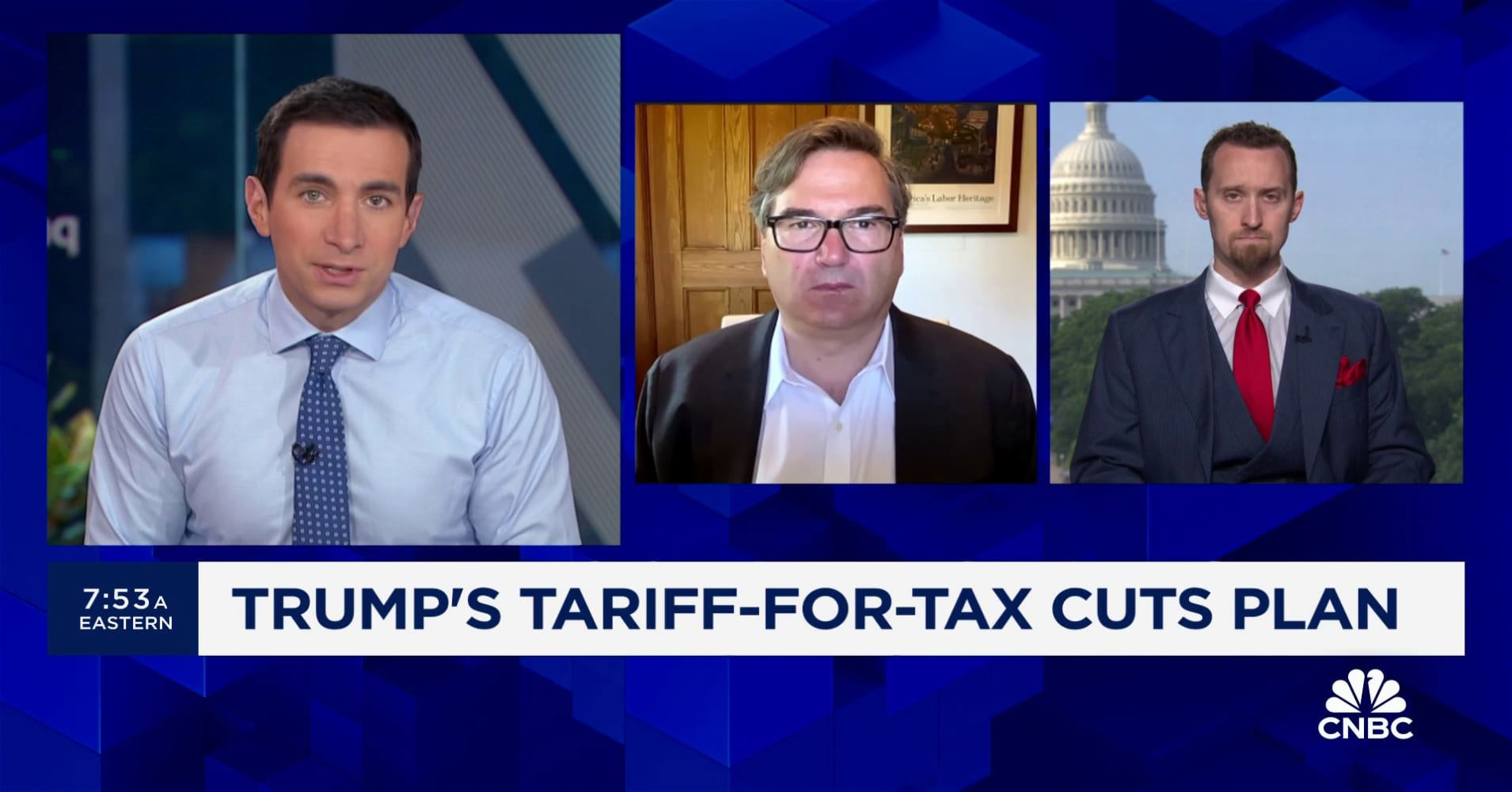Assessing The Feasibility Of Replacing Income Taxes With Tariff Revenue

Table of Contents
The current income tax system weighs heavily on individuals and businesses alike. Consider this: the average American family spends a significant portion of their annual income on federal, state, and local taxes. This statistic underscores the growing debate surrounding alternative revenue streams, and the question of replacing income taxes with tariff revenue is increasingly at the forefront of these discussions. This article aims to assess the feasibility of this radical shift, exploring its potential economic impacts, practical challenges, and alternative approaches. We will delve into the complexities of such a system, weighing the potential benefits against significant risks.
H2: Economic Impacts of a Tariff-Based System
The economic consequences of transitioning to a tariff-based revenue system are multifaceted and potentially far-reaching.
H3: Potential Economic Growth:
A tariff-based system, by its protectionist nature, could potentially stimulate domestic production. Higher tariffs on imported goods make domestic alternatives more competitive, potentially leading to job creation in protected industries. However, this growth is not guaranteed and could be offset by several factors. Increased domestic production might come at the expense of reduced imports and decreased efficiency due to a lack of competition. This could lead to higher prices for consumers and slower overall economic growth.
- Industries that might benefit: Manufacturing, agriculture (certain sectors).
- Industries that might suffer: Retail, sectors reliant on imported components.
- Impact on foreign trade: Potential for trade wars and retaliatory tariffs.
- Impact on international relations: Strained relationships with trading partners.
H3: Inflationary Pressures:
Tariffs directly increase the cost of imported goods, leading to higher prices for consumers. This inflationary pressure can significantly impact consumer spending and overall economic activity. Low-income households are disproportionately affected as they spend a larger portion of their income on essential goods, many of which are imported.
- Goods whose prices might rise significantly: Electronics, clothing, certain food products.
- Impact on consumer spending: Reduced purchasing power, potential for decreased demand.
- Impact on low-income households: Increased burden, potential for reduced living standards.
H3: Distributional Effects:
The distributional effects of a tariff-based system are complex and potentially regressive. While certain industries and workers might benefit from protectionist measures, others will undoubtedly suffer. The revenue generated from tariffs could be used to offset the negative impacts on specific groups, but careful planning and the implementation of robust social safety nets would be crucial to mitigate potential inequalities.
- Potential winners: Workers in protected industries, domestic producers.
- Potential losers: Consumers, low-income households, importers.
- Comparison with income tax: A tariff-based system could exacerbate existing income inequality if not carefully managed.
H2: Practical Challenges of Implementation
Shifting entirely to a tariff-based revenue system presents significant practical challenges.
H3: Revenue Volatility:
Tariff revenue is inherently volatile, subject to fluctuations in global trade patterns, economic cycles, and unforeseen events. Accurately predicting and managing revenue streams under such a system would be extremely difficult, requiring sophisticated financial planning and contingency measures.
- Factors impacting tariff revenue volatility: Global economic downturns, changes in consumer demand, international trade disputes.
- Difficulty in accurate revenue prediction: Uncertainty in global trade makes long-term budgeting challenging.
H3: Political and International Implications:
Implementing high tariffs invites retaliatory measures from other countries, potentially triggering trade wars that harm global economic growth. Such actions could significantly damage international cooperation and diplomatic relations, undermining the benefits of free trade and multilateral agreements.
- Potential trade wars: Retaliatory tariffs could negate the intended benefits.
- Impact on international cooperation: Strained relationships with trading partners.
- Potential legal challenges: WTO rules and other international trade agreements.
H3: Administrative Complexity:
Efficiently collecting and administering tariff revenue necessitates a robust and transparent customs system. Without a well-functioning system, there's a heightened risk of corruption, smuggling, and administrative inefficiencies that could significantly reduce actual revenue.
- Administrative hurdles: Smuggling, customs processing delays, bureaucratic inefficiencies.
- Need for technological upgrades: Modernizing customs systems to improve efficiency and transparency.
H2: Alternative Revenue Models and Hybrid Approaches
A complete shift away from income tax may be unrealistic. Hybrid approaches combining tariff revenue with other tax mechanisms offer a more practical alternative. For example, a carbon tax or a Value Added Tax (VAT) could complement tariff revenue, creating a more stable and diversified revenue base. This hybrid approach could mitigate the volatility and distributional challenges associated with a purely tariff-based system.
- Examples of hybrid systems: Many European countries utilize a combination of VAT and other taxes.
- Benefits of hybrid systems: Increased revenue stability, reduced reliance on a single revenue source.
Conclusion: Weighing the Feasibility of Replacing Income Taxes with Tariff Revenue
Replacing income taxes with tariff revenue presents both alluring possibilities and significant challenges. While a tariff-based system could potentially stimulate some domestic industries, the risks of inflation, revenue volatility, international trade disputes, and administrative complexities are substantial. A careful analysis reveals that a complete reliance on tariffs for government revenue is likely infeasible. Further research and open discussion are needed to explore alternative revenue models and the potential of carefully designed hybrid approaches. Before implementing any significant changes, a thorough assessment of replacing income taxes with tariff revenue, including its potential consequences, is crucial for responsible policymaking. Thorough consideration of hybrid tax models is essential to achieve a balanced and sustainable revenue system.

Featured Posts
-
 Minnesotas Edward Big Night Timberwolves Defeat Brooklyn Nets
Apr 30, 2025
Minnesotas Edward Big Night Timberwolves Defeat Brooklyn Nets
Apr 30, 2025 -
 How Much Do You Need To Earn To Be Middle Class In Your State
Apr 30, 2025
How Much Do You Need To Earn To Be Middle Class In Your State
Apr 30, 2025 -
 Frances Military Takes Delivery Of New Serval Armored Vehicles
Apr 30, 2025
Frances Military Takes Delivery Of New Serval Armored Vehicles
Apr 30, 2025 -
 Channing Tatum 44 And Inka Williams 25 A New Romance
Apr 30, 2025
Channing Tatum 44 And Inka Williams 25 A New Romance
Apr 30, 2025 -
 Nothing Phone 2 A Modular Phone Revolution
Apr 30, 2025
Nothing Phone 2 A Modular Phone Revolution
Apr 30, 2025
